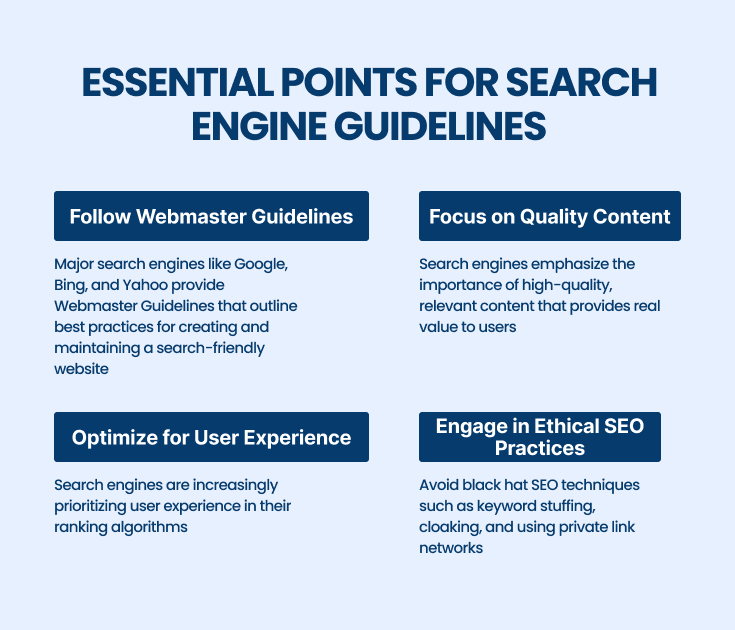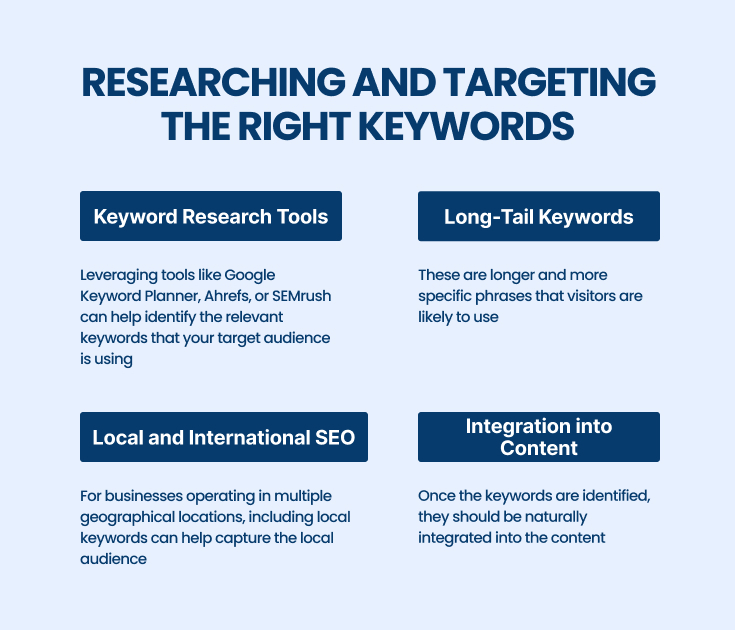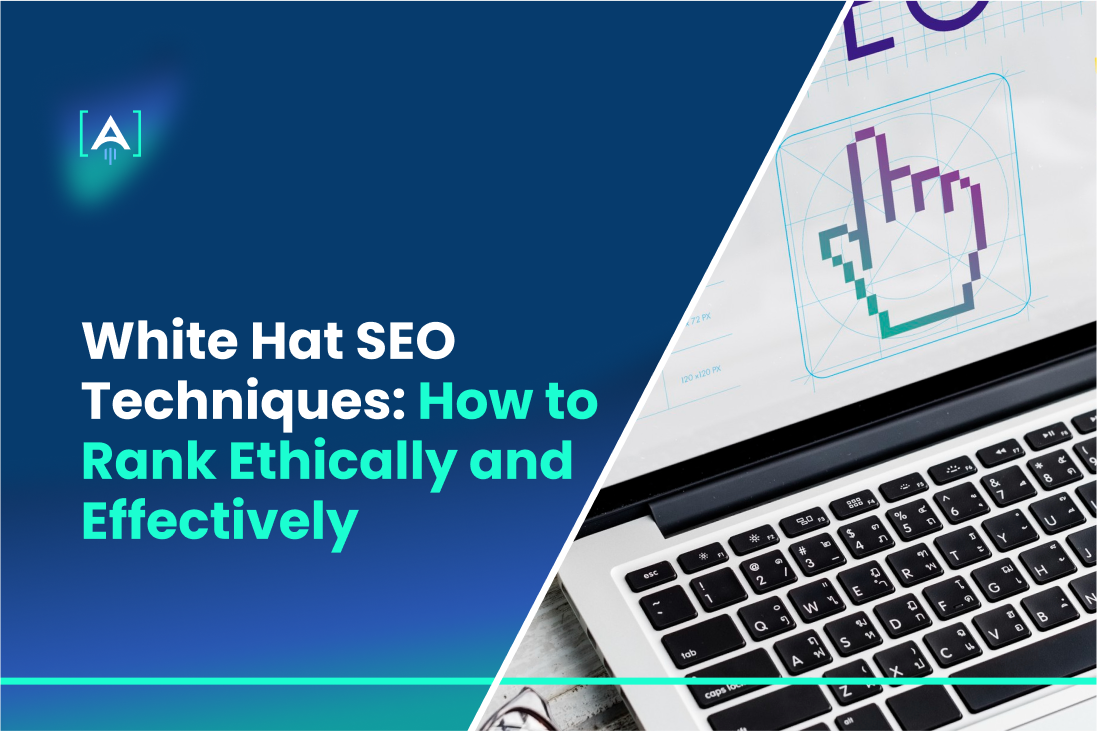Want to dominate search results without any confusing tactics?
White Hat SEO is not just about pleasing algorithms like Google and Bing.
The journey of White Hat SEO is not just about appeasing the algorithms that power market titans like Google and Bing. It’s about crafting experiences that resonate with users, delivering content that answers questions, solves problems, and delights equally.
As we explore the landscape of White Hat SEO, the focus remains clear—ethical techniques are not just good practice. Any SEO Agency can provide thoughtful insights about implementing those tactics.
Source: Forbes
The blog post will clarify the white hat SEO tactics and their importance by sharing the ranking factors.
Definition and Importance of White Hat SEO
If you are consistently asking what is White hat SEO, then clarify for yourself that it refers to implementing optimization strategies, techniques, and tactics that focus primarily on a human audience instead of search engines and completely follow search engine rules and policies.
Source: Forbes
For example, a website optimized for search engines yet focusing on relevancy and organic ranking adheres to white hat SEO practices. Understanding white hat SEO is crucial for any digital marketer or business owner aiming to build a sustainable online presence.
The significance of what is white hat SEO cannot be overstated; it underpins a website’s visibility and searchability, as well as its credibility and ethical standing in the digital realm.
This approach to SEO strategy involves ethical tactics like properly labeled images, appropriate and contextually rich keywords, and easy-to-navigate websites.
Unlike alternative methods that can lead to swift search engine penalties, white hat SEO offers a path to long-lasting growth. Furthermore, this practice ensures that a website’s performance improvements are genuine and sustainable over time, thereby helping businesses build trust with their audience and other stakeholders.
White Hat vs. Black Hat SEO: Understanding the Differences
The digital marketing world is starkly divided between what is white-hat SEO and what is black-hat SEO tactics. The former, as noted, consists of techniques that align with search engine guidelines. In contrast, black hat SEO refers to aggressive SEO strategies that attempt to game these systems and often violate these guidelines.
Black hat techniques such as keyword stuffing, cloaking, and using private link networks can sometimes yield quick results, but they also pose a significant risk of penalties, including being completely banned from search results.
Understanding the differences between these approaches is essential for any SEO professional. While black hat SEO might promise a rapid climb in search rankings, the penalties associated can damage a website’s long-term presence on the internet.
Search engines have become increasingly sophisticated at detecting manipulative tactics and quickly punish those who employ them. Google’s algorithms, for instance, are regularly updated to identify and penalize sites that use black hat strategies, reflecting their commitment to promoting high-quality and highly relevant content.
Adherence to Search Engine Guidelines
At the core of what is white hat SEO is the commitment to adhere strictly to search engine guidelines. This adherence is not merely about avoiding penalties but about aligning website operations with the parameters set by search engines to foster a fair and useful search environment.
Check Our Ultimate SEO Glossary

Essential Points for Search Engine Guidelines
- White hat SEO means following search engine rules carefully.
- The goal is to provide a fair and useful experience for users.
- Focus on creating content for people, not search engines.
- Ensure content is easy to access and navigate.
- Use proper metadata, URL structure, and links.
- Avoid deceptive practices like cloaked content or manipulative links.
- Follow updates in guidelines to stay current with SEO best practices.
- Google’s Webmaster Guidelines provide a roadmap for user-friendly websites.
Understanding white hat SEO fundamentally involves knowing the rules of major search engines like Google, Bing, and Yahoo. These rules emphasize creating content for users, not search engines, and making content easily accessible.
Search engine guidelines are comprehensive, covering everything from properly using metadata and URL structure to avoiding cloaked content and manipulative links. Following these guidelines ensures a website can achieve search engine visibility without resorting to deceptive practices. Search engines regularly update their guidelines to respond to new technologies and user behavior patterns, necessitating continuous learning and adaptation by SEO practitioners.
For instance, Google’s Webmaster Guidelines provide a roadmap for crafting a user-friendly website optimized for search indexing.
In the context of advanced SEO and programmatic SEO, adherence to guidelines becomes even more critical.
These sophisticated approaches leverage software and algorithms to automate and optimize search engine marketing efforts. By ensuring that these tools comply with search engine standards, businesses can enhance their online presence effectively without engaging in black hat techniques, which can lead to severe penalties.
Focusing on User Experience
Focusing on user experience is another pillar of white-hat SEO. This principle involves optimizing websites to enhance user usability, accessibility, and satisfaction. The rationale is simple: search engines prioritize sites that provide valuable and enjoyable user experiences. As such, SEO efforts should focus on attracting visitors and retaining them with high-quality content and seamless site navigation.
Keywords like “AI in SEO” and “advanced SEO” emphasize the role of technology in enhancing user experience. AI, for example, can personalize content recommendations and improve search functionalities on a website, making it easier for users to find the information they need.
This can lead to longer visit durations and more interactions, signals that search engines use to gauge a site’s value to users.

Researching and Targeting the Right Keywords
- User experience is key to white hat SEO.
- Optimize websites for usability, accessibility, and satisfaction.
- Search engines favor sites that provide valuable and enjoyable experiences.
- Focus on attracting visitors and keeping them with high-quality content and easy navigation.
- Keywords like “AI in SEO” and “advanced SEO” help improve content relevance.
- AI can personalize content and enhance search functions for users.
- Better user experience leads to longer visits and more engagement.
- Mobile optimization, fast page load, and interactive design are crucial.
- Keyword research identifies users’ needs and guides content creation.
- Google’s Page Experience update highlights the importance of user-focused metrics.
Furthermore, user experience extends to mobile optimization, page load speeds, and interactive design—all critical aspects of modern SEO. For instance, Google’s Page Experience update underscores the importance of user-centric metrics in search rankings. Effective keyword research also plays a significant role in this area, as it helps understand and address users’ queries and concerns.
Additionally, Search Generative Engine (SGE) represents an advanced tool designed to enhance search functionalities by employing machine learning algorithms to analyze, understand, and generate responsive search results based on user queries.
By focusing on what users are searching for, websites can tailor their content to meet those needs, thus improving the overall user experience and boosting SEO performance.
Ensuring Sustainability of SEO Efforts
Ensuring the sustainability of SEO efforts is essential for long-term search engine visibility and business growth. Sustainable SEO uses practices that improve rankings while laying a foundation for continuous growth without risking penalties.
This requires a commitment to white hat techniques and avoiding manipulative or unethical strategies. For example, sustainable practices include building a strong content strategy that stays relevant over time, keeping a clean and organized link profile, and continuously updating SEO tactics to adapt to algorithm changes.
Additionally, advanced SEO tools and programmatic SEO help automate routine tasks such as site audits and keyword research. This allows SEO professionals to focus on strategy and innovation.
AI in SEO further enhances sustainability. AI can predict future trends, analyze user behavior, and dynamically optimize content for both relevance and engagement. AI-powered tools also streamline tasks like keyword analysis, competitor tracking, and content recommendations, making SEO efforts more efficient and precise.
By implementing AI, businesses can stay ahead of algorithm changes, meet evolving user expectations, and ensure their SEO remains resilient, adaptive, and results-driven.
Content Creation and Optimization
Developing High-Quality, Relevant Content
Content creation and optimization are paramount in white hat SEO. This approach aligns with the most ethical SEO practices, focusing on delivering value to the user while adhering to search engine guidelines.
Source: Forbes
The goal is to craft content that ranks well on the Search Engine Results Page (SERP) and genuinely satisfies the user’s informational needs.
- Understanding User Intent: The first step in creating quality content is understanding the intent behind the search queries. This means delving into what users are looking for when they type certain keywords into search engines.
The content should directly address the user’s intent, whether they seek to purchase a product, find specific information, or compare services. - Comprehensive Topic Coverage: High-quality content covers topics thoroughly and comprehensively. This involves scratching the surface and diving deep into the subject matter to provide insights not readily available elsewhere. Search engines particularly appreciate this depth, which uses algorithms focused on E-E-A-T Google (Expertise, Experience, Authoritativeness, Trustworthiness) to assess content quality.
- Utilizing Various Content Formats: It’s beneficial to present information in multiple formats to cater to different learning styles and preferences. These can include text, images, videos, infographics, and podcasts. Each format should be optimized for SEO, ensuring that it includes relevant keywords and is accessible to search engines.
- Regular Updates and Accuracy: The accuracy of content is crucial for maintaining trust with your audience and search engines. Regular updates to reflect the latest information, statistics, and developments in the field help keep the content relevant and trustworthy over time.
Importance of Originality and Value in Content
- Creating Unique Offerings: Originality can set you apart in a digital world of content. This could mean providing unique insights, compiling original research, or presenting information innovatively.
- Adding Value Beyond Basics: Every piece of content should aim to provide something extra—an additional piece of knowledge, a unique perspective, or practical tips not commonly found in similar content.
- Engaging and Actionable Content: High-quality content should inform, engage, and inspire action. Whether it’s a call to action for a product purchase, a prompt to subscribe to a newsletter, or an invitation to share the content on social media, engaging content moves users beyond passive reading.
- Using E-E-A-T to Guide Content Creation: The content should demonstrate high expertise and authoritativeness following Google’s E-E-A-T principle. This means having qualified authors or sources, citing credible sources, and linking to reputable sites.
By focusing on these aspects of content creation and optimization, businesses can ensure that their SEO strategy is not just about gaining visibility but about earning the trust and engagement of their audience.
This approach aligns with white hat SEO principles and builds a foundation for long-term digital success.
Technical SEO Best Practices
Technical SEO is a crucial component that can be answered in the question of what is white hat SEO, which focuses on optimizing a website’s non-content elements to improve its foundation and structure.
- Improves SERP Rankings: By ensuring proper indexing and crawlability, technical SEO helps search engines understand your site and rank it higher.
- Enhances User Experience: Moreover, a well-optimized website loads faster, navigates smoothly, and functions seamlessly on all devices.
- Supports White Hat SEO: Additionally, technical SEO aligns your website with search engine guidelines, promoting long-term and sustainable growth.
On-Page vs. Off-Page SEO: Finally, understanding the difference allows you to optimize on-page elements effectively, while complementing broader off-page strategies.
A technically sound website helps achieve higher rankings on SERPs and enhances user experience, making it a pivotal element of white hat SEO. Comparing On-page SEO vs. Off-page SEO, you can find significant differences to apply for the first usage.
Enhancing Site Structure and Navigation
A well-organized website structure and intuitive navigation are fundamental for user experience and search engine indexing. Structuring a website in a logical way helps search engines understand your website content better, which can improve your visibility on SERP features.
- Logical Hierarchy and Simple Navigation:
- Establish a clear site hierarchy.
- Ensure every page is reachable from at least one static text link.
- Use consistent menus and breadcrumb navigation to guide users.
- URL Structure Optimization:
- Create clean, concise URLs reflecting your content hierarchy.
- Improve usability and help search engines assess page relevance.
- Use of Header Tags:
- Apply H1, H2, H3 tags to mark sections and sub-sections.
- Makes content easier to read and index.
- Site Map Creation:
- Use XML sitemaps for search engine crawling.
- Use HTML sitemaps to enhance user navigation.
- Keep sitemaps updated for better indexing and usability.
Improving Site Speed and Mobile Usability
As mobile traffic continues to rise, optimizing for mobile SEO is indispensable. Site speed has also become a critical ranking factor for search engines, with faster sites providing a better user experience. Here’s how you can improve both elements:
- Optimize Images and Media Files: Large files can slow down site speed. Optimizing images, compressing files, and utilizing modern formats like WebP for images can significantly reduce load time.
- Leverage Browser Caching: By enabling browser caching, you can store some data on a visitor’s device so that it doesn’t have to be reloaded entirely on each visit. This can drastically improve loading times for repeat visitors.
- Responsive Design: Ensure your site is responsive and adjusts smoothly to different screen sizes. This is crucial not just for user experience but also for SEO, as Google uses mobile-first indexing.
- Accelerated Mobile Pages (AMP): Implement AMP to streamline pages and improve loading speed on mobile devices, enhancing mobile SEO vs.SEM and user satisfaction.
Implementing Secure and Accessible Websites
Security and accessibility are key technical SEO components impacting user trust and rankings.
- HTTPS as a Standard: Secure your site with HTTPS. It is a ranking signal and encrypts the data exchanged between your site and users, protecting sensitive information from intruders.
- Accessibility Optimization: Ensure your website is accessible to all users, including those with disabilities. This includes using proper contrast ratios, alt text for images, and comprehensive navigation options that can be used with assistive technologies.
- Regular Security Audits: Perform regular security checks and updates to protect your site from malware and exploits. This helps maintain your website’s integrity and your users’ safety.
- SEO Automation for Routine Tasks: Utilize SEO automation tools such as tracking rankings, analyzing SERP features, and conducting site audits. These tools save time and help maintain a high level of SEO performance efficiently.
Partner with [A] Growth Agency for White Hat SEO Tactics
Feeling lost in the SEO world? You’re not alone. Search engine optimization sometimes seems like a labyrinth of algorithms, strategies, and conflicting advice. Here is [A] Growth Agency with its core value: Excellence is our standard.
Our experienced team will help you set clear goals and objectives. We strongly believe in the power of data to inform and drive every strategy, ensuring our actions are as effective as they are innovative. Moreover, we treat every business as a unique entity. Our strategies are tailor-made, and we’re not afraid to experiment to find the best path forward.
If you are searching for this, then you know the contact.

